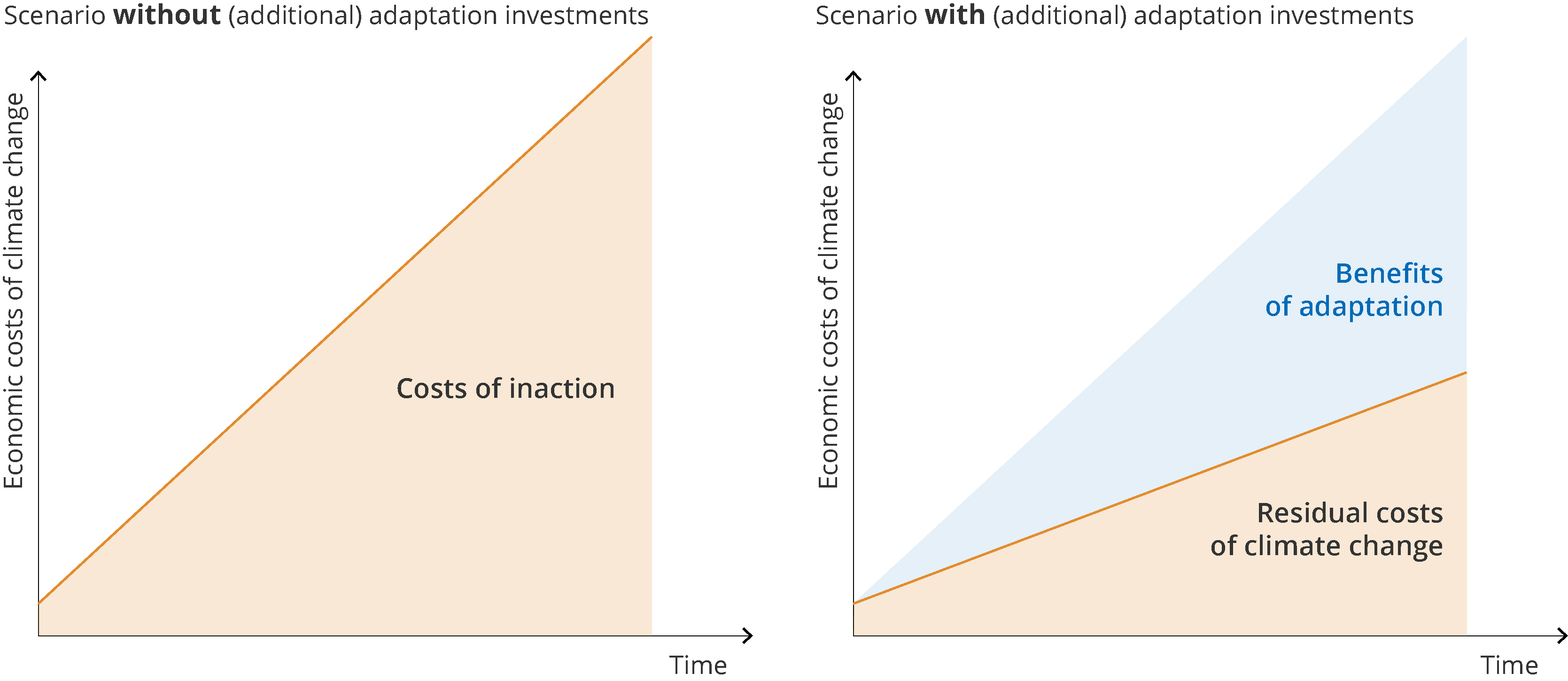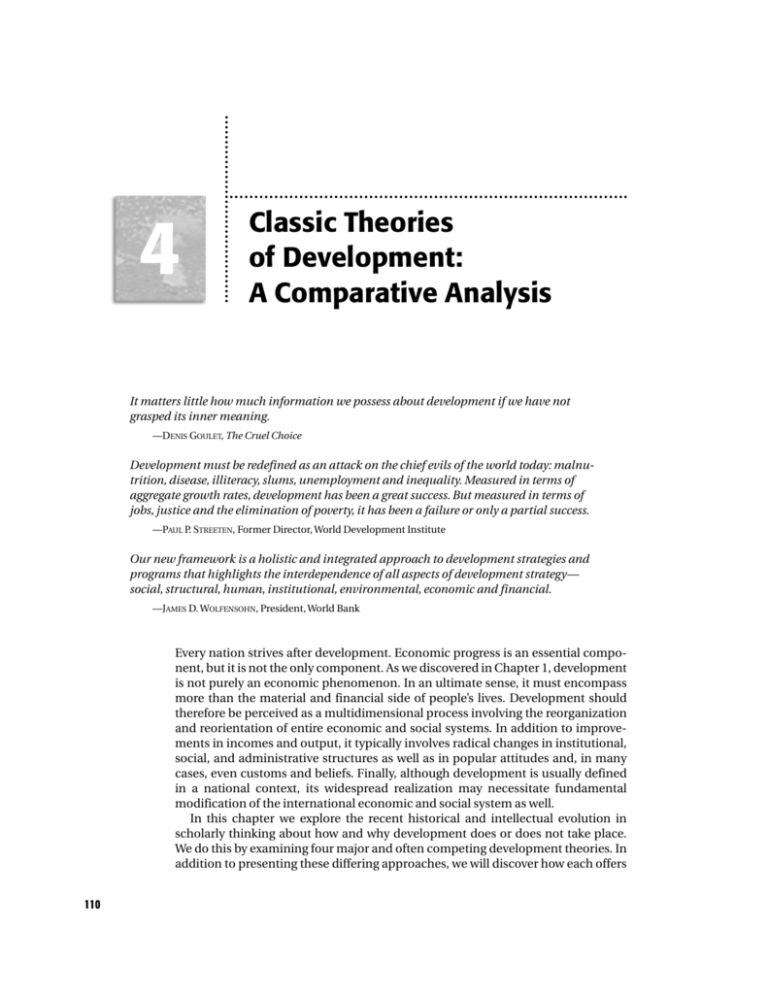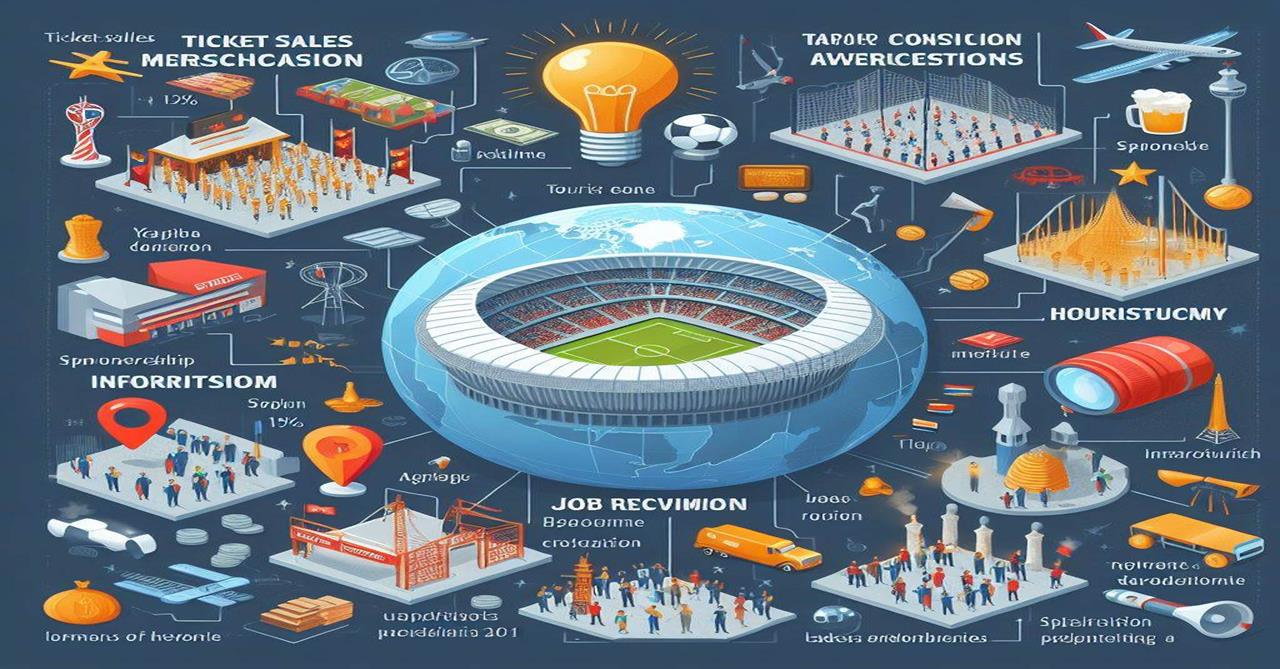
Climate Change Economics: Navigating Global Costs and Investing in a Sustainable Future
Climate change is no longer a distant threat; its impacts are increasingly felt worldwide, from melting glaciers to extreme weather events. While the environmental consequences are dire, the economic implications are equally profound. Understanding "Climate Change Economics" is crucial because it helps us grasp not only the immense costs of inaction but also the significant economic opportunities that arise from investing in solutions.
This article will break down the complex world of climate economics, making it easy for beginners to understand the global costs we’re facing, and the smart, strategic investments we can make to build a more resilient and prosperous future.
The Elephant in the Room: Understanding the Global Costs of Climate Change
When we talk about the "costs" of climate change, we’re not just talking about polar bears and melting ice caps. We’re talking about real money, real jobs, real homes, and real lives. These costs can be broadly categorized into direct and indirect impacts.
1. Direct Economic Costs: The Visible Damages
These are the most immediate and tangible expenses, often reported in the news after a disaster strikes:
- Damage to Infrastructure:
- What it is: Roads washed out by floods, bridges collapsing from storms, power grids failing in heatwaves, coastal properties eroding due to rising sea levels.
- The Cost: Billions of dollars are needed for repair and reconstruction, diverting funds from other public services like education or healthcare. Think about the costs of rebuilding after hurricanes like Katrina or Sandy, or the ongoing battle against coastal erosion in many parts of the world.
- Agricultural Losses:
- What it is: Droughts ruining harvests, excessive rain leading to crop failure, new pests thriving in warmer climates, reduced fish stocks in warming oceans.
- The Cost: Higher food prices for consumers, reduced income for farmers, potential food shortages, and increased reliance on imports for affected nations. This impacts food security and can lead to instability.
- Healthcare Burdens:
- What it is: Increased heat-related illnesses and deaths, the spread of vector-borne diseases (like malaria or dengue fever) into new regions, respiratory problems due to increased air pollution and wildfires.
- The Cost: Strained healthcare systems, higher medical expenses for individuals and governments, and a less productive workforce due to illness.
- Disaster Relief and Recovery:
- What it is: The immediate costs of emergency services, evacuation efforts, temporary housing, and humanitarian aid following extreme weather events.
- The Cost: Governments, NGOs, and international bodies spend vast sums annually on disaster response, often depleting emergency funds.
- Insurance Payouts:
- What it is: As extreme weather becomes more frequent and intense, insurance companies face higher payouts for property damage, crop losses, and health claims.
- The Cost: This can lead to increased premiums for homeowners and businesses, or even make insurance unavailable in high-risk areas, leaving people vulnerable.
2. Indirect and Opportunity Costs: The Hidden Drain
These costs are harder to put a precise number on but are equally devastating:
- Loss of Productivity:
- What it is: Workers unable to commute due to extreme weather, illnesses reducing workforce capacity, and disruptions to supply chains.
- The Cost: Reduced economic output, slower growth, and a less competitive economy.
- Mass Migration and Displacement:
- What it is: People forced to leave their homes due to rising sea levels, desertification, or resource scarcity.
- The Cost: Social disruption, increased pressure on host communities, and the loss of traditional livelihoods and cultural heritage.
- Resource Scarcity and Conflict:
- What it is: Competition for dwindling water or arable land, exacerbated by climate change, can fuel social unrest and even conflict.
- The Cost: Human suffering, economic instability, and diversion of resources towards security instead of development.
- Loss of Ecosystem Services:
- What it is: Damage to natural systems like coral reefs (which protect coastlines and support fisheries) or forests (which purify air and water).
- The Cost: Reduced natural protection from disasters, loss of biodiversity, and impacts on industries reliant on these services (e.g., tourism, fishing).
The Bottom Line on Costs: Various economic models predict that if we do nothing, climate change could reduce global GDP by 5-20% or even more by the end of the century. This means a significant hit to our collective wealth, standard of living, and future prosperity. Simply put, the cost of inaction far outweighs the cost of action.
The Economics of Mitigation: Investing in a Greener, More Prosperous Future
If the costs of climate change are daunting, the good news is that there are economically sound strategies to mitigate (reduce) its severity. These aren’t just environmental initiatives; they are investments that can drive economic growth, create jobs, and improve public health.
What is Mitigation?
Mitigation refers to efforts to reduce or prevent the emission of greenhouse gases (GHGs) into the atmosphere, or to enhance the removal of GHGs from the atmosphere. It’s about tackling the root cause of climate change.
Key Mitigation Strategies and Their Economic Benefits:
-
The Renewable Energy Revolution:
- What it is: Shifting from burning fossil fuels (coal, oil, gas) to clean energy sources like solar, wind, hydro, and geothermal power.
- Economic Benefits:
- Job Creation: The renewable energy sector is a massive job creator, from manufacturing and installation to maintenance and research.
- Energy Security: Nations become less reliant on volatile global fossil fuel markets, leading to more stable energy prices.
- Reduced Pollution: Less air pollution from fossil fuels means fewer respiratory illnesses, saving healthcare costs and improving public health.
- Cost Reductions: The cost of solar and wind power has plummeted in recent years, often making them cheaper than new fossil fuel plants.
- New Industries: Spawns innovation in battery storage, smart grids, and electric vehicles.
-
Energy Efficiency and Conservation:
- What it is: Using less energy to achieve the same or better results. This includes better insulation in buildings, more efficient appliances, LED lighting, and smart energy management systems.
- Economic Benefits:
- Immediate Savings: Lower energy bills for homes and businesses.
- Reduced Demand: Less need for new power plants, saving infrastructure costs.
- Job Creation: In manufacturing efficient products, installing retrofits, and conducting energy audits.
- Increased Comfort: Better insulated homes are warmer in winter and cooler in summer.
-
Carbon Pricing: Making Pollution Pay:
- What it is: This is a market-based approach to encourage businesses and individuals to reduce their carbon emissions. There are two main types:
- Carbon Tax: A direct fee on greenhouse gas emissions, usually applied to fossil fuels. Think of it like a "pollution fine" – the more you pollute, the more you pay. This incentivizes companies to find cleaner ways of operating to avoid the tax.
- Cap-and-Trade (Emissions Trading System): A government sets a limit (cap) on total emissions, and then issues "allowances" (permits to pollute) to companies. Companies can buy and sell these allowances. If a company pollutes less than its allowance, it can sell its excess permits, earning money. If it pollutes more, it has to buy more permits, making pollution more expensive. This creates a market for emissions reductions.
- Economic Benefits:
- Incentivizes Innovation: Companies are driven to invest in cleaner technologies and processes to reduce their carbon footprint and save money.
- Revenue Generation: The money collected from carbon taxes or permit sales can be used to fund green initiatives, reduce other taxes, or provide dividends to citizens.
- Market Signals: Clearly puts a price on carbon, guiding investment decisions towards low-carbon options.
- What it is: This is a market-based approach to encourage businesses and individuals to reduce their carbon emissions. There are two main types:
-
Sustainable Land Use and Forestry:
- What it is: Protecting and restoring forests (which absorb carbon dioxide), promoting sustainable agriculture that builds soil carbon, and avoiding deforestation.
- Economic Benefits:
- Ecosystem Services: Healthy forests and soils provide clean water, prevent erosion, support biodiversity, and offer recreational value.
- New Livelihoods: Sustainable forestry and eco-tourism can create jobs.
- Carbon Sinks: Forests act as natural carbon capture systems, removing CO2 from the atmosphere.
-
Investing in Research & Development (R&D) and Innovation:
- What it is: Funding the development of new clean technologies, from advanced battery storage and green hydrogen to carbon capture and direct air removal technologies.
- Economic Benefits:
- Future Industries: Creates entirely new sectors and companies, driving economic growth.
- Competitive Advantage: Nations and companies that lead in green tech will have a global competitive edge.
- Breakthrough Solutions: R&D can unlock revolutionary ways to tackle climate change more effectively and cheaply.
Climate Finance and Global Cooperation: Who Pays and How?
Tackling climate change requires massive investment, often in the trillions of dollars annually. This raises critical questions: Who pays? How is the money raised? And how do we ensure it’s used effectively?
- Public Finance: Governments play a crucial role through:
- Budget Allocations: Direct spending on renewable energy projects, public transport, research, and adaptation measures.
- Subsidies: Financial support for green technologies or practices (e.g., tax breaks for electric vehicles).
- Green Bonds: Governments issue these bonds to raise money specifically for environmentally friendly projects.
- Private Finance: The vast majority of climate investment will need to come from the private sector:
- Banks and Investors: Funding green projects through loans, equity investments, and venture capital.
- Corporate Investment: Companies investing in their own decarbonization efforts and sustainable supply chains.
- Pension Funds & Sovereign Wealth Funds: Increasingly investing in sustainable assets.
- International Climate Finance:
- Developed vs. Developing Nations: Historically, developed nations have contributed most to climate change. There’s an agreement for them to provide financial and technological support to developing nations to help them transition to clean energy and adapt to climate impacts.
- Global Funds: Mechanisms like the Green Climate Fund (GCF) channel money from developed countries to support climate action in developing ones.
- Paris Agreement: This landmark agreement sets a framework for global climate action, including commitments on finance, transparency, and adaptation. It encourages nations to set their own targets (Nationally Determined Contributions – NDCs) and regularly review progress.
The "Green Economy" Concept: This isn’t just about spending money; it’s about shifting our entire economic model towards sustainability. A green economy is one that results in improved human well-being and social equity, while significantly reducing environmental risks and ecological scarcities. It’s about growth that is clean, resilient, and inclusive.
Adaptation: Managing the Unavoidable Costs
Even with aggressive mitigation efforts, some level of climate change is already locked in due to past emissions. This is where adaptation comes in.
What is Adaptation?
Adaptation refers to adjustments in natural or human systems in response to actual or expected climatic stimuli or their effects, which moderates harm or exploits beneficial opportunities. Simply put, it’s about learning to live with and minimize the damage from the changes that are already happening or are unavoidable.
Economic Benefits of Adaptation:
Investing in adaptation measures can significantly reduce future economic losses. It’s like buying insurance against future climate impacts.
- Reduced Disaster Costs:
- Examples: Building sea walls and storm barriers to protect coastal cities, improving drainage systems to prevent urban flooding, strengthening buildings against extreme winds.
- Benefit: Prevents billions in damages and saves lives.
- Ensuring Food and Water Security:
- Examples: Developing drought-resistant crops, improving irrigation techniques, building desalination plants, and protecting water sources.
- Benefit: Maintains agricultural productivity and ensures access to vital resources, preventing economic disruption and potential conflict.
- Protecting Public Health:
- Examples: Early warning systems for heatwaves, improved disease surveillance, and public health campaigns.
- Benefit: Reduces illness and death, maintaining a healthy and productive workforce.
- Building Resilient Infrastructure:
- Examples: Designing roads, bridges, and power grids to withstand more extreme weather conditions, relocating critical infrastructure from high-risk zones.
- Benefit: Ensures continued economic activity and avoids costly repairs.
While adaptation is crucial, it’s important to remember that it’s not a substitute for mitigation. There are limits to how much we can adapt, and the costs of adaptation will escalate dramatically if we fail to curb emissions.
Conclusion: The Economic Imperative for Climate Action
The economics of climate change present a clear choice: either we pay a staggering, ever-increasing price for inaction, or we make strategic investments now that will lead to a more sustainable, resilient, and prosperous global economy.
The costs of climate change are real and immense, impacting every sector from agriculture and healthcare to infrastructure and tourism. But the opportunities presented by the green transition are equally compelling: new jobs, cleaner air, enhanced energy security, and innovative industries.
Addressing climate change is not just an environmental imperative; it is an economic one. By embracing smart mitigation strategies, fostering global cooperation, and investing wisely in adaptation, we can protect our planet, stimulate economic growth, and build a future where both people and prosperity can thrive. The long-term economic well-being of humanity depends on the choices we make today.




Post Comment